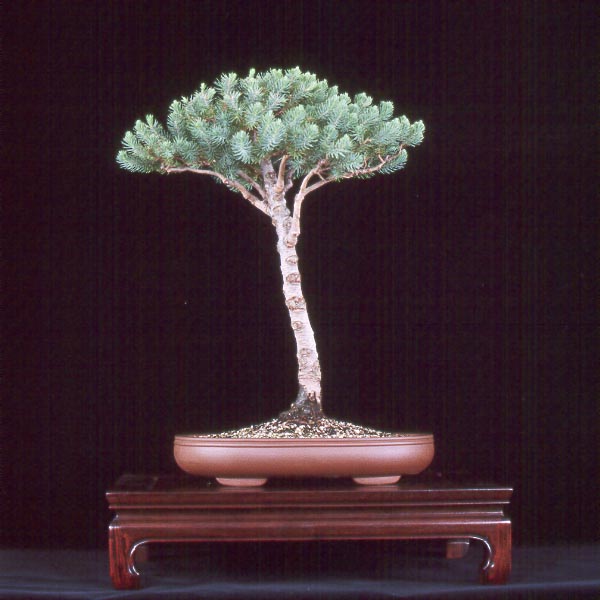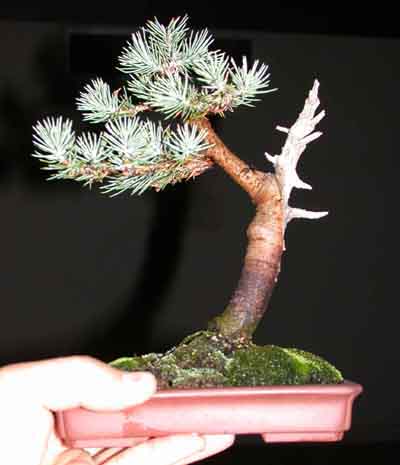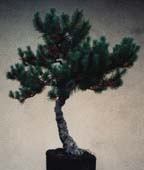
Is Pinus Pinea, Italian Stone Pine, a Good Bonsai
Material?
by Ernie Kuo
Pinus pinea, commonly known as Italian Stone pine, are sold as living Christmas trees in Southern California around Christmas time.
I came across one with an interesting trunk in a two gallon can in a nursery liquidation in 1991. I bought it for a few dollars. What caught my eyes besides the interesting trunk was the mixture of long and short needle on the tree. The foliage, predominantly short and uniform looked promising as bonsai material. In the following two years I kept the tree under observation in my bonsai wannabe area. I found by trimming and plucking I was able to keep the needles short and uniform.
Italian stone pine apparently has two kinds of foliage, the single-needled juvenile foliage and the two-needled mature foliage. The mature foliage of Italian stone pine growing in the ground can be as long as eight inches in length. Perhaps that is why I have not seen an Italian stone pine as a bonsai or referred to as bonsai material in Bonsai books and magazines before 1993. The juvenile foliage of this Italian stone pine is about half an inch long, seemingly quite suitable for bonsai.
Based on my experience with junipers, it is not uncommon to use juvenile foliage for bonsai. Juniperus chinensis 'Foemina' and Juniperus chinensis 'San Jose', because of their ease of reverting to juvenile form, are usually trained in the juvenile form. In fact, they become the preferred kind of foliage on these two kind of junipers. Italian stone pine reverts to juvenile foliage very easily with maintenance commonly done to bonsai, such as constant pruning and plucking.

The photograph above shows the Italian stone pine before I worked on it. It has some long two-needled mature foliage and mostly single-needled juvenile foliage. The long needles were removed together with the brown old juvenile foliage. The tree was then styled by wiring.
Four years after I first purchased the two-gallon Italian stone pine nursery stock I showed the tree for the first time in our local bonsai club in 1995. Responses to the tree were generally favorable. The most frequently asked question by the audience at the show was: " What kind of tree is this ?"
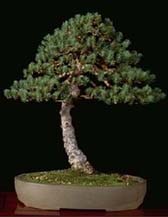
With my five years of experience with Italian stone pine, I would like to summarize the strength and weakness of this species as a bonsai material.
The strong points are:
1. The juvenile foliage is short and uniform.
2. It is very easy to keep the foliage juvenile.
3. The bare branches bud back very easily if the terminal growth
are pinched or pruned.
4. The large branches stay put when the wires are removed after a
year of two.
The weak points are:
1. Usually there are unsightly bumps on the trunk around the base
of the branches of young trees.
2. Juvenile foliage turns brown easily soon after newer growth
emerges.
3. The smaller branches need detail wiring to maintain orderly
appearance.
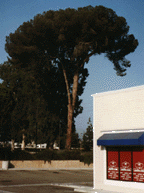
Italian stone pine has its own tall, graceful and stately
flat-top style. Photograph above shows one growing in the ground
in my neighborhood. These pines can be seen very often in the
landscapes of Rome. Hence, they are also referred to as the pines
of Rome. The following picture is an
Italian stone pine developed into its natural style
